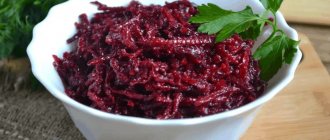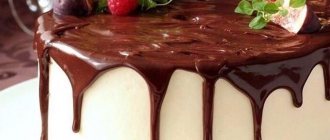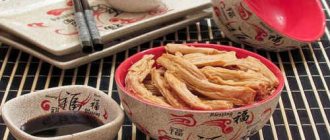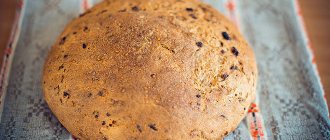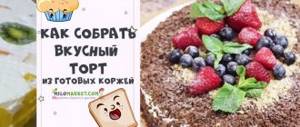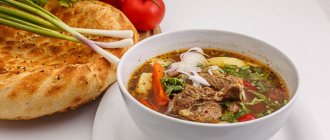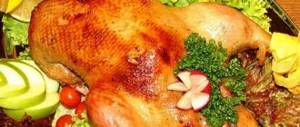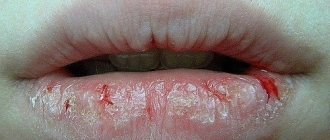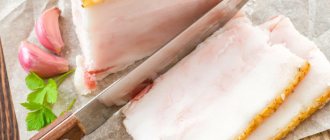Ghee: benefits and harms
In essence, such a product is pure milk fat, which is obtained from cow's butter after cooking and boiling. During this processing, water, milk proteins and sugar are removed from the initial product. The resulting purified product has a delicate taste and smell, contains useful substances such as vitamin A and PP, microelements necessary for the coordinated functioning of the body - potassium, magnesium, iron.
During frying, ghee does not release carcinogens; on the contrary, it is an antioxidant and helps remove free radicals from the body.
Food. The one prepared using it has a more pleasant taste than the one prepared using classic cream.
But with all the advantages, the product also has disadvantages:
- Since it is fat, it is prohibited for patients suffering from diseases of the gastrointestinal tract, especially pancreatitis.
- It will not be beneficial for obese people either.
- It is also undesirable for patients with diabetes.
- Even healthy people should not abuse it. The maximum daily intake for a healthy adult is no more than 10 grams.
Oven recipe
This product should be prepared in the oven using unsalted fatty butter. To prepare it you need to follow the following plan:
- Turn on the oven to heat to 150 degrees;
- Cut the butter into pieces and place in a container with a thick bottom. Please note that after installation there should be a free space of about nine centimeters to the edge. Otherwise, there is a risk that the product will splash the walls of the oven;
Place gauze folded in several layers at the bottom of the colander and drain the finished product into a clean container. It is important to try not to disturb the sediment. Allow the oil to cool;
How to make ghee from butter
Many housewives have a natural question: how to make ghee at home? There are several methods of melting, but the taste and appearance of the product will differ slightly.
To prepare the classic version, you will need oil with a high percentage of fat content (homemade is best), as well as thick-walled dishes. It is not recommended to use aluminum in this particular case - there is a high risk that the product will burn.
Usually, to prepare one serving of baked product, 1 kg of raw materials is taken. The output is about 750 grams of melted butter.
The classic recipe is quite simple to follow.
- Cut the butter into small pieces, place in a container and place on medium heat.
- As soon as the mass has become liquid and homogeneous, reduce the heat and simmer the mixture for about 40 minutes, regularly skimming off the white foam that forms.
- After this, the fire is turned off, and the resulting oil is poured into previously prepared clean and dry jars, after straining through a sieve and cheesecloth.
Chicken tabaka (tapaka) with ghee
We will need a small chicken, a head of garlic, two large spoons of ghee, ground black pepper, and sea salt.
The most important thing is that the main semi-finished product is flattened. To do this, you need to find either an old cast iron iron, or a small weight or dumbbell. A brick wrapped in polyethylene will also work (to prevent crumbs and sand from getting in). We cut the chicken along the belly and give it a characteristic flat shape. Coat a large, thick-bottomed frying pan with melted butter and place the chicken there, salted and peppered. Fry under pressure for 15 minutes on each side. Finally, season with crushed garlic and herbs (in the Imeretian version, blackberries mixed with cilantro and garlic).
Cooking in a slow cooker
Ghee can also be obtained from butter using a slow cooker.
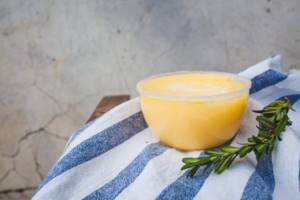
For this:
- The required amount of the original product should be cut into small pieces and placed in the bowl of the device, set to the “Stew” mode.
- As soon as all the product has melted, the temperature is reduced by 100 degrees. It must be remembered that the lid of the unit cannot be closed during the entire cooking process.
- The product is simmered for no more than 2 hours, periodically removing the foam and stirring.
The resulting oil is poured into clean containers. The output is a honey-yellow product.
GHI oil in a slow cooker
The multicooker allows you to ensure uniform heating and maintain a stable temperature. It is ideal for making ghee.
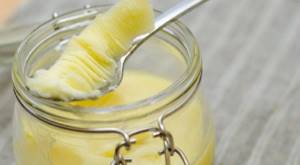
Preparation:
1. Place the oil in a bowl and set the mode to “stew”, “cook” or any other mode with a moderate temperature.
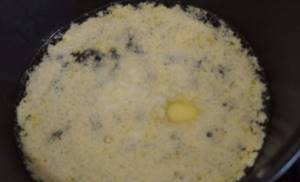
2. Cook with the lid open until all the sediment flakes off, is welded to the bottom, and the greed itself becomes transparent.
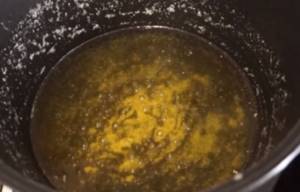
Carefully strain into a jar. Can be stored at room temperature. There is no data on the shelf life; in the homeland of this product it is believed that it can be stored indefinitely. It is important to ensure cleanliness and moisture-free conditions.
How to make it in the oven
This technique is good in cases where you need to prepare a large amount of product. It is important to remember that processing half a kilo of oil in this way will take about an hour and a half.
- The oven is preheated to 150 degrees, dishes with thick walls are placed in it, and the required amount of oil is added. It is important to ensure that there is at least 8 cm left to the edge, then the simmering mass will not splash much.
- The product is simmered until it becomes transparent with an amber tint. A film should form on the surface of the mixture.
- After this, the dishes are removed from the oven, the film is carefully removed with a slotted spoon, and the contents are filtered through cheesecloth and poured into clean jars.
Indian style ghee
Indians are a people who have been preparing ghee since ancient times and revere its benefits. In India, people are convinced that this oil protects the body from colds and diseases of the gastrointestinal tract, especially the small intestine.
Cooking time: 2.5 hours.
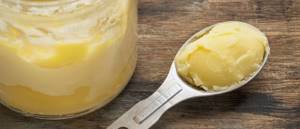
Ingredients:
- 800 gr. butter with at least 85% fat content.
Additional equipment:
- gauze cloth.
Preparation:
- Cut the butter into medium-sized pieces and place them in a saucepan with thick walls.
- Melt the butter over low heat. During the heating process, a creamy foam will form on the surface. It should be removed.
- When the sediment, an oily white, remains at the bottom of the pan, turn off the heat. You can stir the mixture a little so that it cools down faster.
- The ghee should be golden in color with a nutty aroma.
- Take the jar in which you are going to store the product. Place a gauze cloth over the neck and strain the oil into a jar.
- Cover the cooled oil with a lid. The product is stored for about a year.
Ghee
This product is used not only for cooking, but also for personal care. All kinds of face and hair masks are made on its basis.
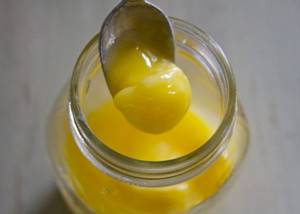
The final product has a delicate aroma with nutty notes. It takes longer to cook than ghee according to the classic recipe, but the result is worth it.
- Place the butter in a heavy saucepan and allow to melt over medium-low heat, stirring.
- As soon as the mixture begins to boil, turn the heat to low, but the boiling should not stop.
- The resulting foam is carefully removed with a slotted spoon; the product is not stirred. It is important to carefully monitor when the actual fat, milk protein and water separate from the mixture. The latter will be on top and will quickly evaporate.
- Now it's important to watch your protein. It will settle to the bottom as a white sediment. As soon as the color begins to change from whitish to golden, the fire is turned off, and the resulting high-quality fat is filtered through a sieve and several layers of gauze into clean jars. It is very important not to miss this moment. If the protein starts to burn, the taste of the product will be spoiled and it cannot be used as food.
How to cook Ghee in the oven
This method is considered the best for preparing Ghee. Especially if you want to melt a large amount of butter. In this case, the container is evenly surrounded on all sides by heat. It is distributed over the entire surface, not just below. Despite the length of the process, no special intervention on your part is required. Please note that the container should not be filled to the brim. The minimum indentation is 8-10 cm.
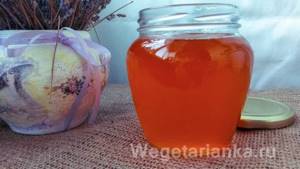
How to cook ghee in the oven
- Preheat the oven to 150 degrees. Take a container whose volume will correspond to the amount of oil. Cut it into pieces and place in a saucepan with a thick bottom.
- Place the pan with the oil in the oven. Do not cover.
- Heat without stirring until the creamy mass turns into a clear liquid. A crust may form on the top and sediment at the bottom. Heating time depends on the volume of butter. See the table for more details.
- Remove the pan from the oven. Carefully remove the crust from the melted butter using a slotted spoon or spoon.
- Strain the finished ghee through a sieve or several layers of gauze into a sterile, dry container.
- When the Ghee has cooled down a bit but is still liquid, pour it into a container for further storage. It is recommended to cover with a lid when the oil has cooled completely.
With added black pepper
This product has a bitter taste and a pronounced aroma. To do this, take 2 - 3 tablespoons of black peppercorns per one and a half kilograms. The spice is wrapped in gauze and added to the mixture at the moment when it has already melted, but has not yet begun to boil. After this, the product is prepared as usual, the pepper is removed before straining.
Pilaf with vegetables in a slow cooker
You need to take half a kilo of ribs, two glasses of long rice, a couple of tablespoons of melted butter, a mixture of spices for pilaf, onions, bell peppers and tomatoes (2 pieces each). First marinate the meat in spices, and boil the rice separately until half cooked. Next, place the chopped ribs, butter, vegetables and rice on the bottom of the multicooker container. Pour in half a glass of water. Cook in the “Stew” mode for 40 minutes with the lid on. Ghee gives the dish a unique nutty aroma and bright taste.
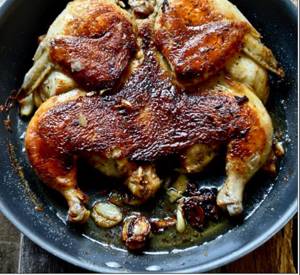
How to store ghee at home
Ghee has a long shelf life. At room temperature it can be stored for up to six months. In a hermetically sealed glass container in the refrigerator - no more than 3 years.
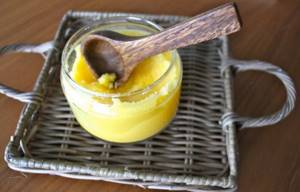
The product can be stored in the freezer - it should be placed in plastic containers with a tight-fitting lid.
An important addition is that the product is always removed from the jar with a clean, dry spoon; this precaution will help extend its shelf life.
Making ghee from butter is not at all difficult. It is important to strictly follow the recipe and temperature conditions in order to get not only a tasty, but also a healthy product that the whole family will enjoy.
Features and nuances: how to make Ghee at home
This product, with an unusual name for Russian ears, is essentially ordinary ghee made from cow or goat milk. But it is prepared using a special method. This allows you to completely clean it of lactose, casein and other harmful impurities.
The main beneficial property of such fat is the absence of toxins and combustion products, even when heated to temperatures above 180-190 degrees Celsius. This means that it can even be used in recipes that require frying.
According to Ayurveda, ghee has rejuvenating, healing, tonic properties. It strengthens the immune system and normalizes the functioning of the gastrointestinal tract. The product increases the ability to concentrate and activates brain activity. Ghee has a beneficial effect on the regeneration of all tissues, including bone and nerve tissue, which is especially important. However, all these properties will manifest themselves only under proper preparation conditions.
How to choose a good oil
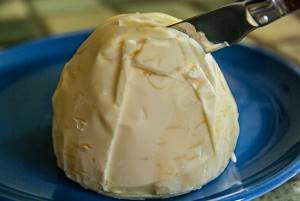
To prepare high-quality Ghee from ordinary domestic one, you will have to try. First of all, you need to choose the right raw materials. Simple tips from experienced people will help you with this.
- Pure butter a priori cannot have a fat content of less than seventy-eight percent. If this indicator is lower, then the product contains, at best, modified vegetable fats. At worst, there are unknown additives that are undesirable to use.
- A store-bought product must comply with GOST 37-91, be unsalted and unflavored. It is better not to purchase packages marked TU, even if the packaging says “natural” and the fat content is high. It usually contains a lot of additives. When heated, they form an unappetizing slurry and cannot be separated into fractions.
- When heated in a frying pan, a good quality product does not foam, but boils. It should emit tiny bubbles.
- After freezing, it will be impossible to cut the natural one - it breaks off into pieces.
- When stirred with boiling water, a homogeneous emulsion is formed. There should be no sediment, pieces, flakes or other “garbage” in it.
When heated, a high-quality product should not have a specific, much less a strong chemical odor. It should have a pleasant creamy aroma.
General nuances
Choosing the original product itself is very important. But the manufacturing process plays an equally important role.
- For heating, it is better to use saucepans with a thick bottom. They hold the temperature better and prevent food from burning. You can use a cauldron or casserole dish made of cast iron or glass. Enameled cookware and stainless steel will also work, but it’s better to avoid aluminum right away. It can oxidize, saturating your oil with chemicals it doesn't need.
- Prepare a slotted spoon in advance - you will need to frequently skim off the foam that forms on the surface.
- You can make Ghee in advance - it can be perfectly stored in the cellar or refrigerator for many months. The beneficial properties do not disappear over time.
- Ghee should not be allowed to darken - this is a clear sign of overheating. Its color should be light yellow, rich, like an egg yolk.
A sediment will certainly form at the bottom of the saucepan. It is good for nothing and contains a large amount of harmful substances. Therefore, it will have to be poured out.
